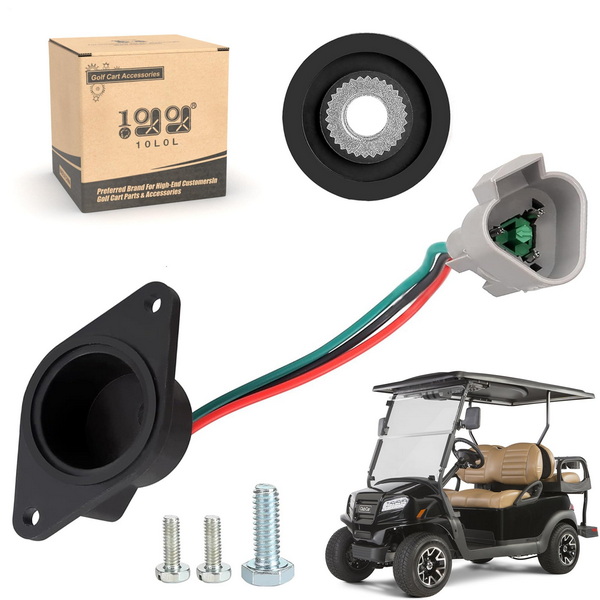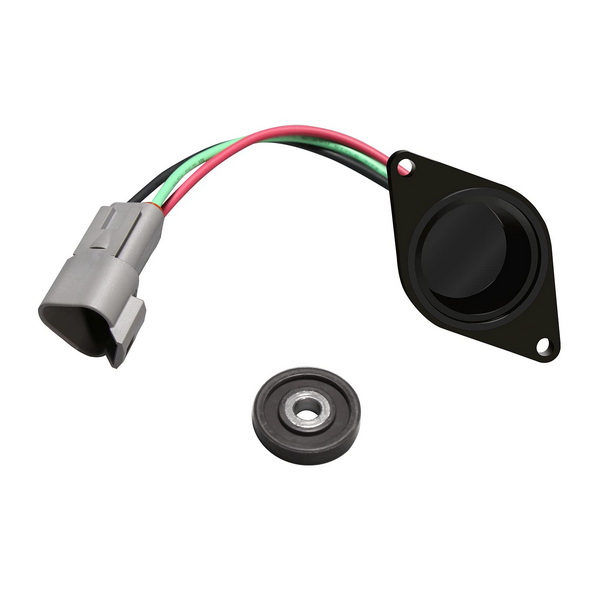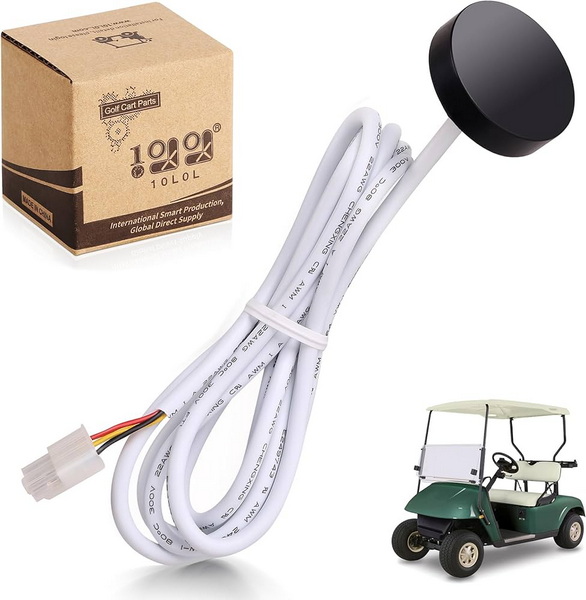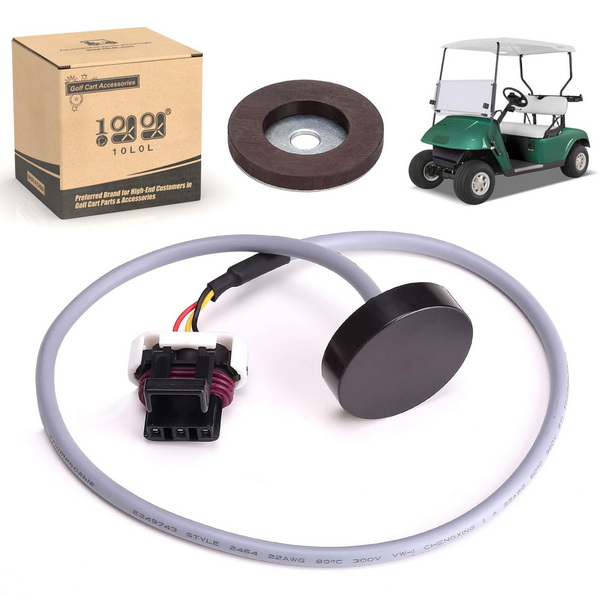Content Menu
● Understanding the Speed Sensor
● How Does a Speed Sensor Work?
● Importance of Speed Sensors
● Common Issues with Speed Sensors
● Maintenance Tips for Speed Sensors
● Replacing a Speed Sensor
● The Role of Speed Sensors in Performance Management
● Advanced Features of Modern Speed Sensors
● Troubleshooting Common Speed Sensor Problems
● Impact of Environmental Factors on Speed Sensors
● User Experiences with Speed Sensors
● Future Innovations in Speed Sensor Technology
● Conclusion
● FAQ
>> 1. What happens if my golf cart's speed sensor fails?
>> 2. How do I know if my speed sensor is bad?
>> 3. Can I replace my golf cart's speed sensor myself?
>> 4. Where is the speed sensor located on most golf carts?
>> 5. How often should I inspect my golf cart's speed sensor?
Electric golf carts have become a staple in recreational activities and short-distance transportation, especially on golf courses. Among the various components that contribute to their functionality, the speed sensor plays a crucial role. This article delves into what a speed sensor is, how it operates, its significance, common issues associated with it, maintenance practices, and much more.

Understanding the Speed Sensor
A speed sensor in an electric golf cart is a device designed to monitor and measure the speed of the cart. Typically located near the motor or wheels, it detects the rotation of components such as the axle or wheel. The information gathered by the speed sensor is sent to the vehicle's controller or speed control unit, which adjusts the power output of the motor based on these readings. This mechanism helps maintain a consistent and safe speed, particularly when navigating inclines or declines.
How Does a Speed Sensor Work?
The operation of a speed sensor hinges on detecting magnetic fields or changes in motion. When the wheels of the golf cart rotate, they generate a magnetic field that the sensor can detect. The sensor then converts this information into electrical signals that are transmitted to the controller.
- Types of Speed Sensors: There are generally two types of speed sensors utilized in electric golf carts:
- Hall Effect Sensors: These sensors are prevalent in modern electric carts and detect changes in magnetic fields.
- Optical Sensors: Less commonly used in golf carts, these sensors measure wheel rotation through light detection.
Importance of Speed Sensors
Speed sensors are integral to the performance and safety of electric golf carts. Their importance can be summarized as follows:
- Safety: By regulating speed, they help prevent accidents caused by excessive speeds, especially in areas with restrictions like golf courses or residential neighborhoods.
- Performance Monitoring: They provide real-time feedback on how fast the cart is moving, which aids in optimizing battery usage and overall performance.
- Preventing Damage: A malfunctioning speed sensor can lead to erratic behavior in speed control, potentially damaging other components of the cart.
Common Issues with Speed Sensors
Despite their reliability, speed sensors can develop issues over time. Some common problems include:
- Erratic Speed Control: A malfunctioning speed sensor may send incorrect signals to the controller, resulting in erratic acceleration or deceleration.
- Loss of Power: If the sensor fails completely, it can lead to a total loss of speed control, making it unsafe to operate the cart.
- Incorrect Speed Readings: The odometer may display inaccurate speeds if there is an issue with the sensor.
Maintenance Tips for Speed Sensors
To ensure optimal functionality of your golf cart's speed sensor, consider these maintenance tips:
- Regular Inspections: Periodically check the sensor for any signs of wear or damage.
- Keep It Clean: Ensure that dirt and debris do not accumulate around the sensor area as this could interfere with its operation.
- Professional Help: If you suspect an issue with your speed sensor, consult a qualified technician for inspection and repair.

Replacing a Speed Sensor
If you determine that your golf cart's speed sensor is malfunctioning, replacing it can be straightforward. Here's a general guide:
1. Locate the Sensor: Typically found on or near the rear axle.
2. Disconnect Power: Always disconnect the battery before working on electrical components.
3. Remove Old Sensor: Unscrew and unplug the faulty sensor from its mount.
4. Install New Sensor: Place the new sensor in position, secure it with screws, and reconnect any wiring.
5. Test Functionality: Reconnect power and test drive your golf cart to ensure proper operation.
The Role of Speed Sensors in Performance Management
Speed sensors not only help maintain safety but also play a significant role in performance management. By providing real-time data on speed and distance traveled, they enable better energy management within electric golf carts. This data allows for adjustments in power output based on current driving conditions—such as uphill climbs where more power is needed versus flat terrain where less power suffices.
Advanced Features of Modern Speed Sensors
Modern electric golf carts often come equipped with advanced speed sensors that offer additional features beyond basic speed measurement:
- Distance Tracking: Some sensors can track distance traveled over time, enabling users to monitor their usage effectively.
- Battery Consumption Monitoring: Advanced sensors can provide insights into battery usage based on driving habits and terrain challenges.
- Integration with GPS Systems: In some high-end models, speed sensors can integrate with GPS systems to provide precise location-based data that enhances navigation and operational efficiency.
Troubleshooting Common Speed Sensor Problems
When issues arise with your golf cart's performance related to speed control, troubleshooting can help identify whether it's a problem with the speed sensor:
1. Check for Debris: Inspect for mud or dirt buildup around the sensor that may impede its function.
2. Inspect Wiring Connections: Look for frayed wires or loose connections that could disrupt signal transmission between the sensor and controller.
3. Test Voltage Output: Use a multimeter to check if the sensor is receiving adequate voltage; insufficient voltage may indicate wiring issues or a failing battery.
4. Monitor Performance Changes: Take note of any sudden changes in performance—such as unexpected slowdowns—which could signal an impending failure of the speed sensor.

Impact of Environmental Factors on Speed Sensors
Environmental conditions can significantly affect how well a speed sensor functions:
- Temperature Extremes: High temperatures can cause electrical components to expand and potentially fail, while extremely low temperatures may lead to sluggish performance due to battery inefficiencies.
- Moisture Exposure: Water ingress can damage electrical components within the speed sensor assembly. It's essential to ensure that connections are sealed properly against moisture intrusion.
- Terrain Variability: Driving frequently on rough terrains may cause more wear and tear on both wheels and sensors due to vibrations and impacts from uneven surfaces.
User Experiences with Speed Sensors
Many users report varied experiences regarding their electric golf carts' performance linked directly to their speed sensors:
- Enhanced Control: Users often express satisfaction with improved control over their carts after replacing faulty sensors—leading to smoother rides and better handling during turns and inclines.
- Battery Life Improvement: By optimizing power usage through accurate feedback from functioning sensors, many users have noticed extended battery life during outings on courses or other terrains.
- Cost vs. Benefit Analysis: While some users initially hesitate at replacement costs for parts like speed sensors, many find that investing in quality components pays off through enhanced performance and reduced long-term maintenance costs.
Future Innovations in Speed Sensor Technology
As technology advances within electric vehicles (EVs), we can expect further innovations impacting how speed sensors function:
- Smart Sensors: Future developments may incorporate artificial intelligence (AI) capabilities into sensors allowing them to learn driving patterns and optimize performance accordingly.
- Wireless Communication: The integration of wireless technology could enable real-time data sharing between multiple components within an electric golf cart for improved diagnostics and performance monitoring.
- Enhanced Durability Materials: Innovations in materials science may lead to more robust designs capable of withstanding harsher environmental conditions without compromising accuracy or reliability over time.
Conclusion
In summary, a speed sensor is an essential component of an electric golf cart that ensures safe and efficient operation by monitoring wheel rotation and regulating speed accordingly. Regular maintenance and timely replacement can prevent potential issues affecting performance and safety. Understanding how these sensors work and their importance will empower users to maintain their electric golf carts effectively for optimal performance on and off the course.

FAQ
1. What happens if my golf cart's speed sensor fails?
If your golf cart's speed sensor fails, you may experience erratic speed control, loss of power, or incorrect readings on your odometer.
2. How do I know if my speed sensor is bad?
Signs of a bad speed sensor include sluggish performance, erratic acceleration or deceleration, and an inability to reach expected speeds.
3. Can I replace my golf cart's speed sensor myself?
Yes, replacing a golf cart's speed sensor can be done by following manufacturer guidelines while ensuring safety precautions are taken during installation.
4. Where is the speed sensor located on most golf carts?
The speed sensor is typically located on or near the rear axle of electric golf carts.
5. How often should I inspect my golf cart's speed sensor?
It is advisable to inspect your golf cart's speed sensor regularly as part of routine maintenance to ensure optimal performance.











































